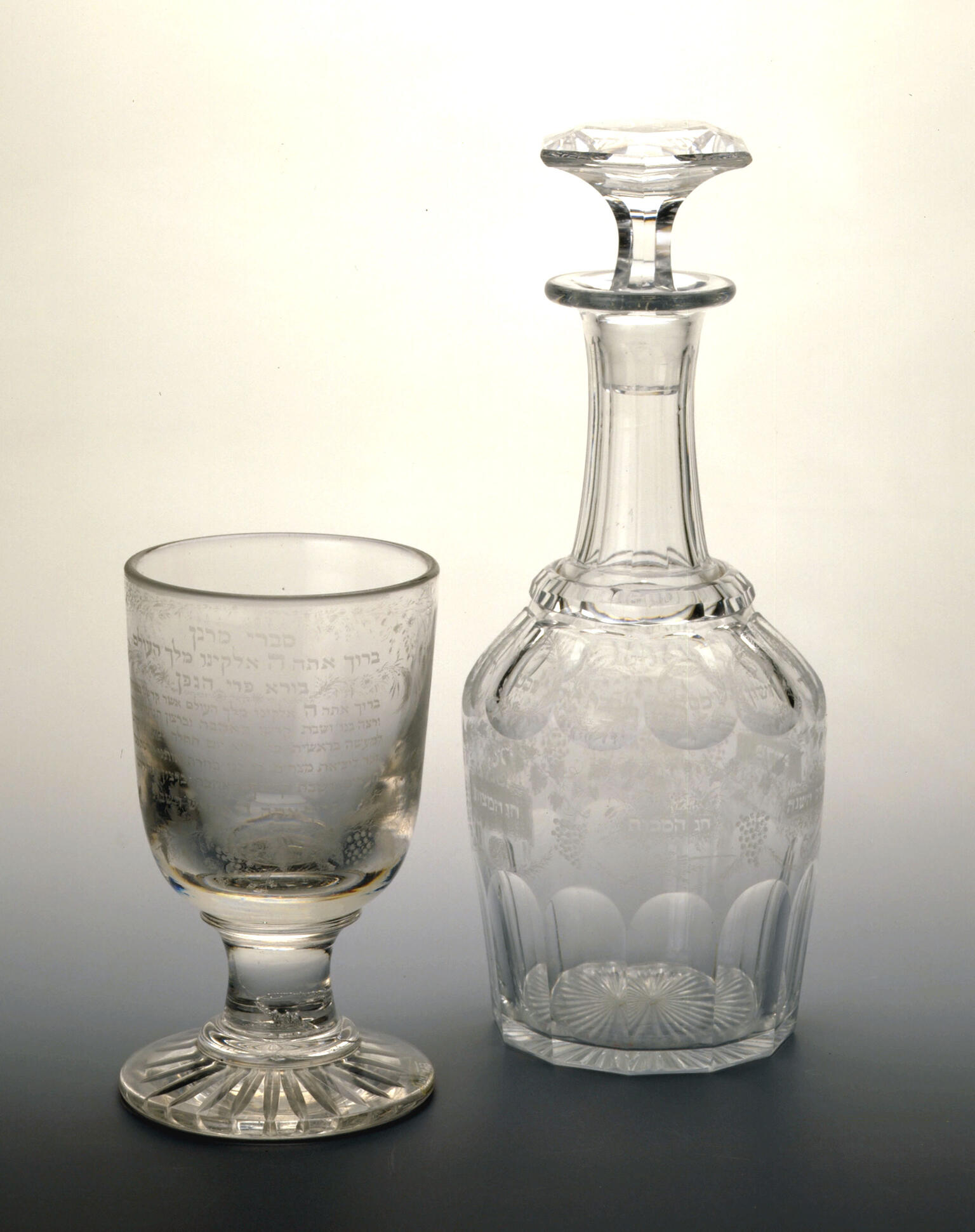Kiddush Cup and Wine Carafe (Amsterdam)
Daniel Henriques de Castro
ca. 1860
This kiddush cup and wine carafe by the master glass engraver Daniel Henriques de Castro displays his delicate technique, known as stippling. Though it is most common for kiddush cups, used for the ritual blessing over wine, to be made out of silver, they are also sometimes made from glass, such as this rare surviving nineteenth-century example.
Credits
Collection Jewish Historical Museum, Amsterdam.
Published in: The Posen Library of Jewish Culture and Civilization, vol. 6.
You may also like
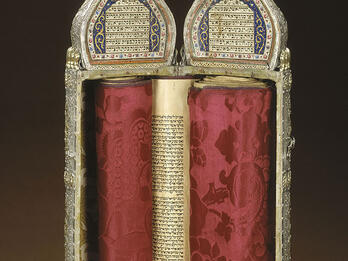
Torah Scroll and Case
The origin of this Torah scroll is in Turkey. It was donated by the Camondo family, one of the most important Jewish families in Istanbul, many of whose members settled in Paris and greatly…
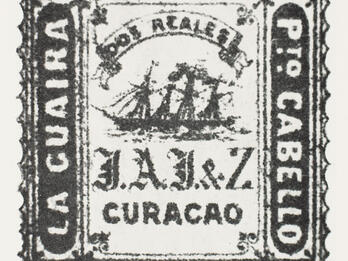
Postage Stamp
When the company owned by Jacob Abraham Jesurun (1806–1875) obtained a contract for mail delivery within the Caribbean in 1867, it had its own stamps printed featuring the firm’s initials, J. A. J. &…
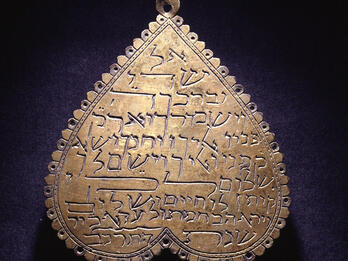
Amulet with Priestly Blessing (Morocco)
This unusual heart-shaped amulet from Morocco is inscribed with the words “God Almighty,” followed by the priestly blessing (Numbers 6:24–26) and an individualized text: “May God give him life and…

Medal—St. Stephanskirche
This medal for St. Stephanskirche in Vienna provides an example of the style innovated by its engraver Jacques Wiener (1815–1899), in which the exterior of a building appears on one side and the…
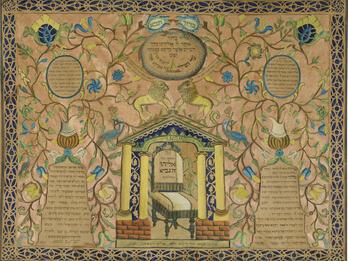
Paper Cut—Brit Milah
Paper cuts have been a tradition of Jewish folk art, with the earliest record of one dating to the fourteenth century. Given the widespread availability of paper in Europe by the mid-nineteenth…
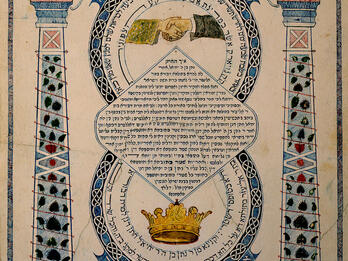
Ketubah (New York)
The ketubah is a religious and legal contract of marriage. Traditionally, it outlines the conjugal and economic conditions of a marriage and is written in Aramaic. This printed ketubah created by…
Engage with this Source
Creator Bio
Daniel Henriques de Castro
Daniel Henriques de Castro, a member of one of Amsterdam’s prominent Portuguese Jewish families, was a pharmacist, art collector, and glass engraver. He executed works for use in Jewish rituals as well as items for non-Jewish clients. Castro took after the master engraver known as Wolf, carrying on the technique of stippling, whereby numerous small dots are made upon a glass surface with the use of an etching needle and a small hammer. A painstaking process, the stipple method produces a particularly delicate, filmlike design that cannot be achieved through the more common technique of acid etching. In 1883, Castro’s son published an article about glass engraving, “Een en ander over glasgravure,” in a Dutch quarterly, detailing the processes of his father’s art.
You may also like

Torah Scroll and Case
The origin of this Torah scroll is in Turkey. It was donated by the Camondo family, one of the most important Jewish families in Istanbul, many of whose members settled in Paris and greatly…

Postage Stamp
When the company owned by Jacob Abraham Jesurun (1806–1875) obtained a contract for mail delivery within the Caribbean in 1867, it had its own stamps printed featuring the firm’s initials, J. A. J. &…

Amulet with Priestly Blessing (Morocco)
This unusual heart-shaped amulet from Morocco is inscribed with the words “God Almighty,” followed by the priestly blessing (Numbers 6:24–26) and an individualized text: “May God give him life and…

Medal—St. Stephanskirche
This medal for St. Stephanskirche in Vienna provides an example of the style innovated by its engraver Jacques Wiener (1815–1899), in which the exterior of a building appears on one side and the…

Paper Cut—Brit Milah
Paper cuts have been a tradition of Jewish folk art, with the earliest record of one dating to the fourteenth century. Given the widespread availability of paper in Europe by the mid-nineteenth…

Ketubah (New York)
The ketubah is a religious and legal contract of marriage. Traditionally, it outlines the conjugal and economic conditions of a marriage and is written in Aramaic. This printed ketubah created by…


